Black rot of Crucifers
The disease
Black rot of crucifers is caused by Xanthomonas campestris pv. campestris (Pammel) Dowson (Xcc). The first description of the disease was made by Garman in 1894 in Kentucky, USA; the disease has since been identified in all continents in regions where crucifers are cultivated. Black rot can attack all cultivated brassicas and other cruciferous crops (e.g. radish), weeds and ornamentals and it is probably the most important disease of Brassica oleracea L. crops (including cabbage, cauliflower, broccoli, Brussels sprouts and kale) in the world.
Black rot is a seed-borne, vascular disease. The bacteria can penetrate the plant through the hydathodes or wounds. The main symptoms are V-shape chlorotic, yellow lesions at the margins of the leaves, with darkening of veins; the affected leaves can drop prematurely and distortion of leaves, dwarfing and plant death can also occur.
Control of the disease is difficult and can only be achieved through the use of healthy planting material (seeds and transplants) and cultural practices that limit the spread of the disease (e.g. the elimination of infected crop debris and cruciferous weeds that are potential inoculum sources). The development and use of resistant cultivars has long been recognised, but has had a limited success in practice due to the small number of useful sources of resistance available.
The pathogen profile of Xanthomonas campestris pv. campestris has been published by Vicente and Holub (Mol Plant Pathol., 2013, 14:2-18) including information on the pathogen sequenced genomes, secretion systems, type III effector genes and other virulence and pathogenicity factors.
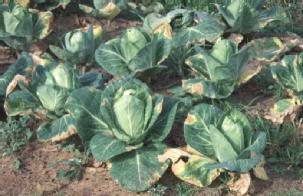
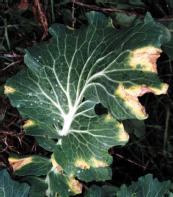
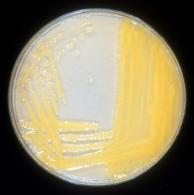
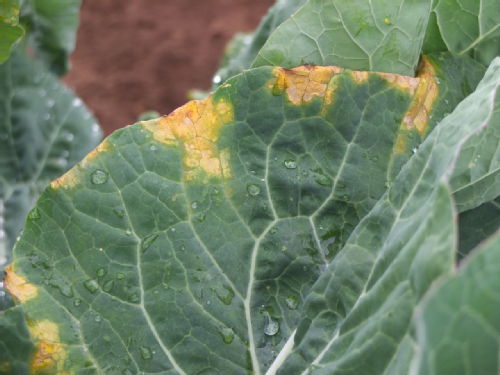
Identification and origin of Xcc races
Isolates of Xcc can be separated into nine different races on the basis of the reaction of cultivars of B. oleracea, B. rapa, B. napus, B. carinata and B. juncea (Vicente and Holub 2013. Mol Plant Path. 14:2-18). Races 1 and 4 are predominant in B.oleracea crops (Vicente et al., 2001. Phytopath. 91: 492-499Link opens in a new window). We have proposed a gene-for-gene model to explain the interaction of races and differential cultivars based on five matching Brassica resistance genes and five Xcc avirulence genes.
Sources and inheritance of resistance
We have screened over 250 Brassica accessions for resistance to different Xcc races (Taylor et al. 2002. Phytopath. 92: 105-111Link opens in a new window). Most B. oleracea (C genome) accessions are susceptible to all races, but we have identified some accessions with resistance to one or more of the rare races (2, 3, 5 and 6). Strong resistance to race 4 is frequent in B. rapa (A genome) and B. napus (AC genome). Resistance to races 1 and 4 was present in some B. nigra (B genome) and B. juncea (AB genome) accessions. Potential broad spectrum resistance was found at a low frequency in B. rapa, B. nigra and B. carinata (AB genome).
The inheritance of resistance to three races of Xcc was studied in B.oleracea, B. carinata and B. napus (Vicente et al. 2002. Phytopath. 92: 1134-1141Link opens in a new window). A major locus for resistance to race 4 in B. napus has been mapped.
Previous HRI / Warwick HRI work
Work done at HRI has been funded by the BBSRC, MAFF, Defra and HDC and has been targeted at understanding the host-pathogen interactions in order to develop effective resistance-breeding strategies, and understanding the epidemiology in order to develop practical disease management strategies. Previous projects have examined diagnostics, seed test methods (Roberts et al. 2004. Seed Sci Technol 32:439-453), the transmission of the disease (Roberts et al. 1999. Eur J Plant Path. 105: 879-889) and spread in module-raised brassica transplants (Roberts et al. 2007. Plant Pathol. 56: 391-401).
We have also studied the pathogenicity and genetic diversity of other Xanthomonas campestris isolates including isolates of X. campestris pv. raphani that cause a leaf spot disease of crucifersLink opens in a new window and other hosts (e.g. tomato, pepper) (Vicente et al. 2006. Phytopathol. 96: 735-745Link opens in a new window).
We have worked on a Defra-funded project on crop improvement from 2004 to 2009. In this project we studied the inheritance and mapped potential broad spectrum resistance found in B. rapa (Soengas et al. 2007. Theor Appl Genet. 114: 637-645) and we tried to transfer resistance to B. oleracea.
We have collaborated with Dr Brita Dahl Jensen and studied the diversity of Xcc isolates from vegetable brassica fields in Nepal (Jensen et al., 2010. Plant Disease, 94: 298-305Link opens in a new window). We were also involved in the study of diversity of Xcc in India (Singh et al. 2016. Plant Pathol, 65: 1411-1418).
Joana Vicente worked as a co-investigator on a Dfid/BBSRC funded project of 'Accelerated breeding of black rot resistant brassicas for the benefit of East African smallholders' (2008 till 2013). This project was led by Dr Paul Hand (Harper Adams University); Prof Eric Holub and Dr Joseph Mulema (currently at CABI, Nairobi, Kenya) were also involved; this was a collaboration with Fera, York, and involved institutions in Kenya, Tanzania and Uganda. We studied the diversity of East African isolates of Xcc (Mulema et al. 2012. Eur J Plant Pathol. 133: 427-438) and fine mapped QTL that control resistance in Brassica rapa.
Black rot of watercress
We have isolated and characterised isolates from diseased watercress (Nasturtium officinale) from Florida. Black rot of watercress does not seem to be caused by known species of Xanthomonas and X. campestris pvs. campestris and raphani are probably not important pathogens in this crop. Two new species of Xanthomonas have been described: X. campestris pv. nasturtii sp. nov. for a pathogen that causes black rot of watercress; X. campestris pv. floridensis sp. nov. for non-pathogenic strains found associated with watercress samples (Vicente et al. 2017. IJSEM.DOI 10.1099/ijsem.0.002189). The bacterial diseases of watercress need further research. For more information, please contact Joana G. Vicente.
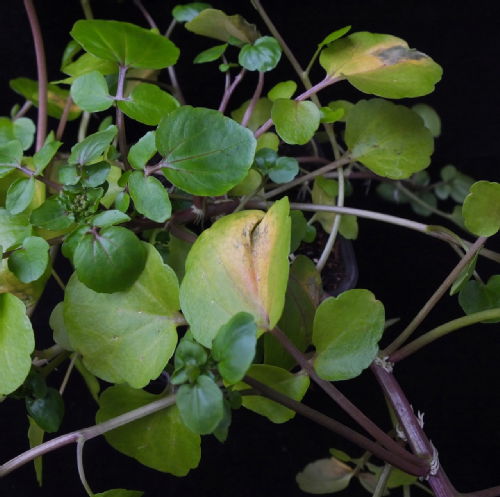
Current work at the School of Life Sciences
In 2020, we started work on a new project 'Xanthomonas plants diseases: mitigating existing, emerging and future threats to UK agriculture', funded by UKRI, Defra and the Scottish Government and part of the Bacterial Plant Diseases ProgrammeLink opens in a new window. This project is a collaboration between the University of Warwick, Fera Science Ltd and the University of Exeter.
We are comparing genomes of different strains of Xcc, X.c. pv. raphani and other X. campestris strains (continuing initial work included in Vania Horta de Passo's PhD thesisLink opens in a new window completed in 2016/17).
We are studying recent outbreaks of black rot in different crops in the UK - part of this work was funded by the Agriculture and Horticulture Development Board (AHDB). An example is an outbreak caused by strains of Xcc race 5 in swede (Brassica napus). We are also completing work on the characterisation of strains that caused outbreaks in Mauritius.
We are investigating the differences (genetic and pathogenic) between races of Xcc including the newest identified races.
We are developing work on X. campestris from ornamental Brassicaceae in collaboration with Fera Science Ltd.
We are continuing to collect and characterise X. nasturtii strains from the US and Europe.
For more information, please contact Joana G. Vicente.
